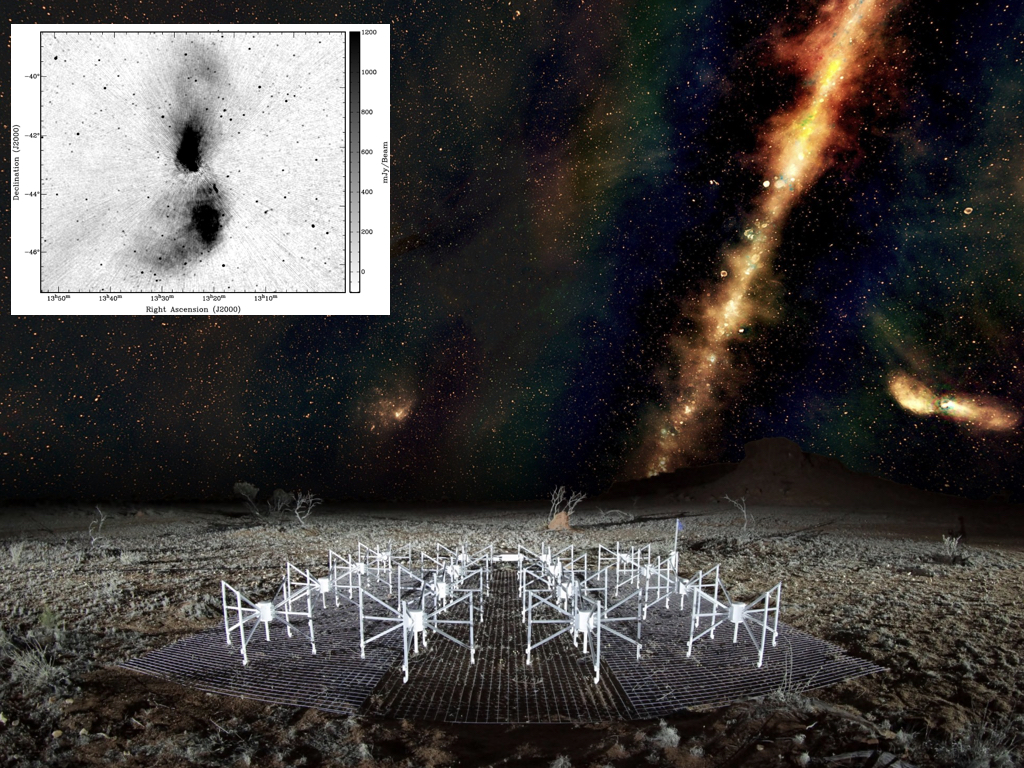Daily Image
19-12-2017The view of Centaurus A from the Murchison Widefield Array
| Submitter: | Ben McKinley, Raffaella Morganti |
| Description: | Centaurus A is one of the truly iconic objects in the radio sky. It is a popular target for amateur astronomers in the Southern Hemisphere due to its size, elegant dust lanes, and prominent plumes. As the closest radio galaxy to Earth, "only" 12 million light-years away, for professional astronomers it is the perfect "cosmic laboratory" to study the physical processes connected to the presence of an active black hole. The radio lobes are 9 (nine!!!) degrees in size (18 times the size of the full Moon...): such a large size means that Centaurus A is one of the very very few objects in the sky where perspective should be taken into account! Even for the Murchison Widefield Array (MWA) imaging this object is a challenging task. The large size of the radio emission in Centaurus A appears clear in the GLEAM survey, showing the "radio colour" view of the sky above the MWA radio telescope, located in outback Western Australia. The Milky Way is visible as a band across the sky. The Centaurus A radio galaxy is the object to the right of the image. However, the latest addition to the study of this radio galaxy has been the combination of deep observations with the MWA (at 154 MHz) and the Parkes radio telescope (at 2.3 GHz) to image all the emission from Centaurus A and to derive the spectral properties of the huge radio lobes. The MWA has extremely good sensitivity for diffuse emission allowing the large-scale structure of Centaurus A to be imaged in great detail. The figure on the top left shows a greyscale of the emission of Centaurus A at 154 MHz with the MWA. The image is shown on a linear scale between -0.1 and 1.2 Jy/beam and has an angular resolution of 3 arcmin. The observations at radio frequencies have been combined with those from several optical telescopes to study complex mechanisms fuelling jets of material blasting away from a black hole 55 million times more massive than the Sun. The results can be found in the paper "The jet/wind outflow in Centaurus A: a local laboratory for AGN feedback" by McKinley, Tingay, Carretti, Ellis, Bland-Hawthorn, Morganti, et al. https://arxiv.org/abs/1711.01751) and a press release from ICRAAR that can be found at https://www.icrar.org/galaxygiant/ . |
| Copyright: | Radio image by Natasha Hurley-Walker (ICRAR/Curtin) and the GLEAM Team. MWA tile and landscape by Dr John Goldsmith / Celestial Visions. Red indicates the lowest frequencies, green the middle frequencies and blue the highest frequencies. Cen A image credit: ICRAR/Curtin. |
| Tweet |  |
